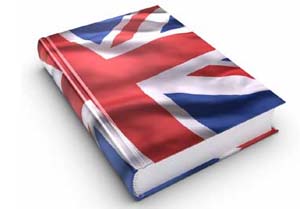The
Victorian Age
The
Victorian Age took its name from Queen Victoria whose reign was the longest in
the history of England. During this
reign there was an economical and territorial expansion. Moreover the old
agricultural economy was replaced by the modern urban economy of manufacturing
and international trade. So, Britain became the wealthiest and most powerful
nation in the world. The unsettled masses of the urban poor were perceived as a
potential danger by the ruling classes which gradually tried to incorporate a
part of the working classes into society trough reforms and progressive
policies. Britain turned politically conservative, but both Conservative and
Liberals were initially fearful about extending the right to vote to the
masses. Because of this rejection from policy, in 1832 rose the Chartist Movement, led by the working classes, which
was based on six points of demand, among which that of votes for all males. The
movement failed and its leaders were arrested, but five of the six demands became law. The right to vote for all
males was granted in 1918, while that of
women in 1928 thanks to the suffragettes led by the Pankhurst sisters. The
England's social conditions improved with the Liberal government of Asquith
towards social reforms such as the Old Age Pensions Act which granted pensions
to people over 70 and the National Insurance Act which gave free medical
treatment to insured workers. The mid 19th century was a period of
great technological innovations such as steam powered machines and railways that revolutionized both
industry and transport. The Great Exhibition, the symbol of Britain's
industrial and imperial trading power, was held in a glass edifice called
Crystal Palace and showed 200.000
objects from all over the world. Communications were improved thanks to a more
efficient mail service, printing and the invention of the telephone. For these
reasons the age was characterized by a
general feeling of optimism. During the Industrial Revolution Britain's economy
revolved around the agricultural and textile industry. With the mechanisation
the product's prizes fell, but also the workers' wages fell. The cost of living
was dramatically high because of the
emanation of the Corn Laws which taxed imported corn. Therefore there was
widespread starvation among workers. A Tory prime minister, Robert Pell,
repealed the Corn Laws in 1846 under the pressure of severe famine in Ireland
due to failures in the potato crop, hence called potato famine, which cause the
death of a million people and the emigration to Britain and American of two
million. To solve the problem of starvation, England's government emanated the
Poor Laws, which declared the children destitute, who were sent to work in parish work-houses, in return
for which they received barely enough food to survive. This reflected the
general Victorian view that poverty was a moral problem, to be managed through
repressive measures. It was only towards the end of the 19th century that poverty was considered a
social problem . Moreover in the industrial towns the property owners occupied
up to 50% of the available land, so that the poor were forced to live into
overcrowded slums whose appalling sanitation led to epidemics of cholera and
other diseases.
Charles
Dickens(Coketown)
Coketown is the
classic city that reflects the period of the Industrial Revolution: it's an
imaginary town but it's possible to locate Preston-city, near Manchester.
In this passage we can distinguish the presence of many symbols that give us
the idea of the existing problems inside this particular place.
The town is depicted by different colours: the brick of ' unnatural red and black', 'black canal',
'the river that ran purple 'and it's evident the atmosphere of
pollution due to the tall chimneys and machinery that work continuously
'for ever and ever'. The city appears
monotonous not only in the colours but also in the sounds, in the noises, in
the buildings ,in the streets.
What's about its inhabitants? As in a painting, the inhabitants' expression
communicate only the monotony and sadness of life in this industrialized town.
People have lost their personality, their individuality: they are equally like
one another and look like robots.
Coketown,
expression of the capitalistic system, has got unnatural and artificial
colours, like the strange red that isn't red of brick that is caused by the
smoke and ashes; it is a town of unnatural red and black like the painted face
of a savage, this two colours dominates the description of Coketown, in
particular black paint even the channel and river's water. From this water then
come a terrible stink that is caused by industrial refuses. This ideal town is
full of machinery and chimneys noise, in the form of rattling and trembling
dominates. The metaphor of the head of an elephant in a sort of madness
reproduces the movement of the piston of a steam engine, mad is the machine,
mad is the consequence of industrial revolution. Dickens introduces an idea of
alienation: man is identified with the product and even with the machine that
produces this; the machine causes a lack of identity. Dickens shows how the
system determines the life of people and criticizes the alienation caused by
mass production: people go out and in at the same hours, they do the same job
and for them every day is the same as the previous and the next.
By the use of metaphors, we can clearly deduce the
presence of two types of risk that coexist and cause not only serious physical
dangers (pollution) but even psychological problems.
The alienation due to the repetitive life in Coketown is a significant and
worrying message of the existence of a psychological risk that workers may
suffer.







